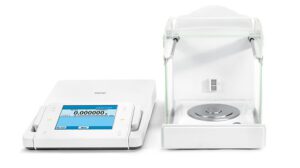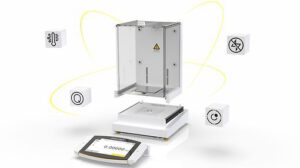Laboratory Weighing Balances
The choice is all yours: you decide exactly what you need
The first series of lab balances to feature a completely modular design, Cubis® enables you to combine your choice of display and control unit, weighing module, data interface module, and much more. Configure your lab balance just the way you want it by selecting from the widest variety of options available. As a result, you will obtain the best equipment solution for integration into your process.
For scientists in R&D and analytical laboratories needing the most reliable lab weighing results, the Cubis® II from Sartorius is a completely configurable, high performance portfolio of balance hardware and software that will align with your unique demands and compliance requirements to maximize operational efficiency and experimental outcomes.
All modules of the Cubis® II balance were designed for an intuitive operation, further aided by intelligent diagnostic systems. These design elements guarantee a higher degree of repeatability for different workflows while lowering the probability of human error during measurement.
1) Ultra Micro Weighing Balance
)Micro Weighing Balance
3)Semi Micro Weighing Balance
4) Precision Weighing Balance
5) Top Loading Balances
An analytical balance (or lab balance) is a class of balance designed to measure small mass in the sub-milligram range. The measuring pan of an analytical balance (0.1 mg or better) is inside a transparent enclosure with doors so that dust does not collect and so any air currents in the room do not affect the balance’s operation. This enclosure is often called a draft shield. The use of a mechanically vented balance safety enclosure, which has uniquely designed acrylic airfoils, allows a smooth turbulence-free airflow that prevents balance fluctuation and the measure of mass down to 1 μg without fluctuations or loss of product.[citation needed] Also, the sample must be at room temperature to prevent natural convection from forming air currents inside the enclosure from causing an error in reading. Single pan mechanical substitution balance maintains consistent response throughout the useful capacity is achieved by maintaining a constant load on the balance beam, thus the fulcrum, by subtracting mass on the same side of the beam to which the sample is added.[citation needed]
Electronic analytical scales measure the force needed to counter the mass being measured rather than using actual masses. As such they must have calibration adjustments made to compensate for gravitational differences.[1] They use an electromagnet to generate a force to counter the sample being measured and outputs the result by measuring the force needed to achieve balance. Such measurement device is called electromagnetic force restoration sensor.[2]





